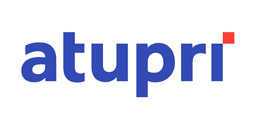In the coming year too, the premiums charged for mandatory health insurance will drastically increase again. But what role do insurance companies play in these price hikes? According to the latest figures published by the Federal Office of Public Health (FOPH), the costs of administrating mandatory health insurance totaled 1.7 billion francs in 2022. The administrative costs accounted for include salaries, sales commissions, and advertising costs.
Salaries make up the bulk of administrative costs, totaling 1.1 billion francs. Around 73 million francs was spent on advertising, while sales commissions consumed 48 million francs. All of these costs combined made up around 5.1 percent of the total premiums paid by residents.
But while the administrative costs are high, they are relatively low compared to healthcare costs. “Primary responsibility for the high health insurance premiums falls on the climbing Swiss healthcare costs,” stresses moneyland.ch analyst Felix Oeschger.
This is what Swiss health insurance companies spend on administration
The costs of administrating mandatory health insurance vary starkly between insurance companies. According to figures published in 2023, administrative spending ranged between 105 and 458 francs per insured person, depending on the insurance company (see Table 1).
The Krankenkasse Luzerner Hinterland spent the least on administration, at 105 francs per insured person. It is followed by the Sumiswalder Krankenkasse (114 francs) and Sodalis (119 francs).
Table 1: Administrative costs in 2022 by insurance company
| Health insurance provider |
Administrative costs per
insured person in 2022 |
| Krankenkasse Luzerner Hinterland |
CHF 105 |
| Sumiswalder Krankenkasse |
CHF 114 |
| Sodalis |
CHF 119 |
| Agrisano |
CHF 145 |
| Sana24 |
CHF 155 |
| CSS |
CHF 157 |
| Visana |
CHF 161 |
| Vivacare |
CHF 161 |
| Galenos |
CHF 163 |
| Klug Krankenversicherung |
CHF 165 |
| Helsana Versicherungen |
CHF 171 |
| Concordia |
CHF 173 |
| Sanavals Gesundheitskasse |
CHF 178 |
| Krankenkasse SLKK |
CHF 184 |
| Swica Krankenversicherung |
CHF 184 |
| Atupri |
CHF 186 |
| Cassa da malsauns Lumneziana |
CHF 186 |
| Aquilana |
CHF 195 |
| Rhenusana |
CHF 203 |
| Assura |
CHF 204 |
| Sanitas Grundversicherungen |
CHF 205 |
| Vita Surselva |
CHF 208 |
| Krankenkasse Wädenswil |
CHF 208 |
| EGK Grundversicherungen |
CHF 213 |
| Krankenkasse Visperterminen |
CHF 222 |
| Easy Sana Assurance Maladie |
CHF 234 |
| CM Vallée d'Entremont |
CHF 234 |
| Kranken- und Unfallkasse Einsiedeln |
CHF 240 |
| Avenir Assurance Maladie |
CHF 240 |
| Philos Assurance Maladie |
CHF 240 |
| KPT Krankenkasse |
CHF 242 |
| AMB Assurances |
CHF 245 |
| ÖKK Kranken- und Unfallversicherungen |
CHF 246 |
| Mutuel Assurance Maladie |
CHF 262 |
| Glarner Krankenversicherung |
CHF 264 |
| Krankenkasse Steffisburg |
CHF 265 |
| Vivao Sympany |
CHF 270 |
| Supra |
CHF 276 |
| Krankenkasse Birchmeier |
CHF 458 |
Note: Only insurance providers that will still operate in 2024 are included in the above comparison.
This is how much of the premium you pay is used for administration
There is another metric that makes it possible to determine how efficiently Swiss health insurance providers manage obligatory health insurance. That metric is the ratio between administrative costs (plus depreciation) and insurance premiums (minus risk compensation). In 2022, the average ratio was 5.1 percent. That figure includes marketing expenses and employee salaries, among other costs.
The Krankenkasse Luzerner Hinterland had the best performance (see table 2), with just 2.6 percent of the money collected in insurance premiums (minus risk compensation) being spent on administrating mandatory health insurance. It is followed by Sodalis (3.6 percent), Visana (3.6 percent), and Galenos (3.8 percent).
Performance ratings can be found in the interactive health insurance comparison on moneyland.ch.
Table 2: Ratio of administrative expenses in relation to insurance premiums
| Health insurance provider |
Administrative costs in 2022
as a percentage of premiums |
| Krankenkasse Luzerner Hinterland |
2.6% |
| Sodalis |
3.6% |
| Visana |
3.6% |
| Galenos |
3.8% |
| CSS |
4.2% |
| Sumiswalder Krankenkasse |
4.3% |
| Concordia |
4.5% |
| Helsana Versicherungen |
4.5% |
| Klug Krankenversicherung |
4.7% |
| Vivacare |
4.7% |
| Sana24 |
4.9% |
| Krankenkasse SLKK |
5.0% |
| Agrisano Krankenkasse |
5.0% |
| Cassa da malsauns Lumneziana |
5.1% |
| Swica Krankenversicherung |
5.1% |
| Philos Assurance Maladie |
5.2% |
| KPT Krankenkasse |
5.3% |
| Easy Sana Assurance Maladie |
5.3% |
| EGK Grundversicherungen |
5.3% |
| Sanitas Grundversicherungen |
5.3% |
| Aquilana |
5.4% |
| Avenir Assurance Maladie |
5.4% |
| Mutuel Assurance Maladie |
5.5% |
| Atupri |
5.6% |
| Krankenkasse Wädenswil |
5.8% |
| Vita Surselva |
5.9% |
| Vivao Sympany |
6.1% |
| Sanavals Gesundheitskasse |
6.2% |
| Rhenusana |
6.4% |
| AMB Assurances |
6.6% |
| Kranken- und Unfallkasse Einsiedeln |
6.7% |
| CM Vallée d'Entremont |
6.7% |
| Supra |
7.0% |
| Assura |
7.2% |
| Krankenkasse Steffisburg |
7.3% |
| Krankenkasse Visperterminen |
7.5% |
| ÖKK Kranken- und Unfallversicherungen |
7.8% |
| Krankenkasse Birchmeier |
8.2% |
| Glarner Krankenversicherung |
10.3% |
Note: Only insurance providers that will still operate in 2024 are included in the above comparison.
Sales commissions for sales of mandatory health insurance
According to the FOPH, around 48 million francs were paid out to insurance brokers as sales commissions for mandatory health insurance in 2022. That is around 2.8 percent of total administrative spending and around 0.15 percent of total insurance premiums collected. It is worth noting that spending on sales commissions for mandatory health insurance was low compared to spending on sales commissions for supplemental health insurance.
More on this topic:
Compare mandatory health insurance premiums now
Tips for lowering your health insurance premium

 Deal of the Day
Deal of the Day 




